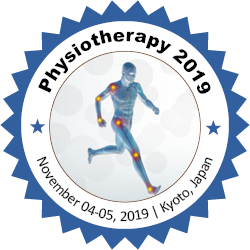Wahyuni
Lecture at school of physiotherapy Faculty Health Science Universitas Muhammadiyah Surakarta
Title: The Comparison effect of Massage Effleurage and Deep Breathing Exercise in minimized Primary Dysmenorrhea among Mas Mansyur Boarding Students
Biography
Biography: Wahyuni
Abstract
More than 50% of teenagers experience dysmenorrhea. In Indonesia the incidence of dysmenorrhea is 64.25%, consisting of 54.89% of primary dysmenorrhea and 9.36% of secondary dysmenorrhea. Dysmenorrhea is cramps in the lower abdomen and spread to upper waist, occur due to contractions in the uterus, and begins at a few hours before or during menstruation and lasts for 48 to 72 hours. Some treatments can be used to reduce the symptoms of dysmenorrhea, both pharmacology and non-pharmacology. Non-pharmacology treatments include physiotherapy, lifestyle changes, nutrition, and alternative therapies. Physiotherapy is a treatment that concentrates on pain, useful for dysmenorrhea, and without adverse effects, for example massage effleurage and deep breathing exercise . Effleurage massage is performed with gentle pressure to improve blood circulation, exert pressure, heat the abdominal muscles, and encourage physical and mental relaxation. Deep breathing exercise reduce physical, mental, emotional tension, and help in pain management both physiologically and psychologically.
The purpose of this study is to compare the effectiveness of massage effleurage and deep breathing exercise in minimized primary dysmenorrhea
Method: This study is a quasi-experimental study with purposive sampling. The inclusion criteria: primary dysmenorrhea, no taking pain medication, not doing exercise or other sports; Exclusion criteria: marital status. The number of respondents obtained was 20 people.
Result: there was no significant difference effect between massage effleurage and deep breathing exercise in minimized primary dysmenorrhea.
Conclusion: Massage effleurage and deep breathing exercise are as effective in minimized primary dysmenorrheas.

